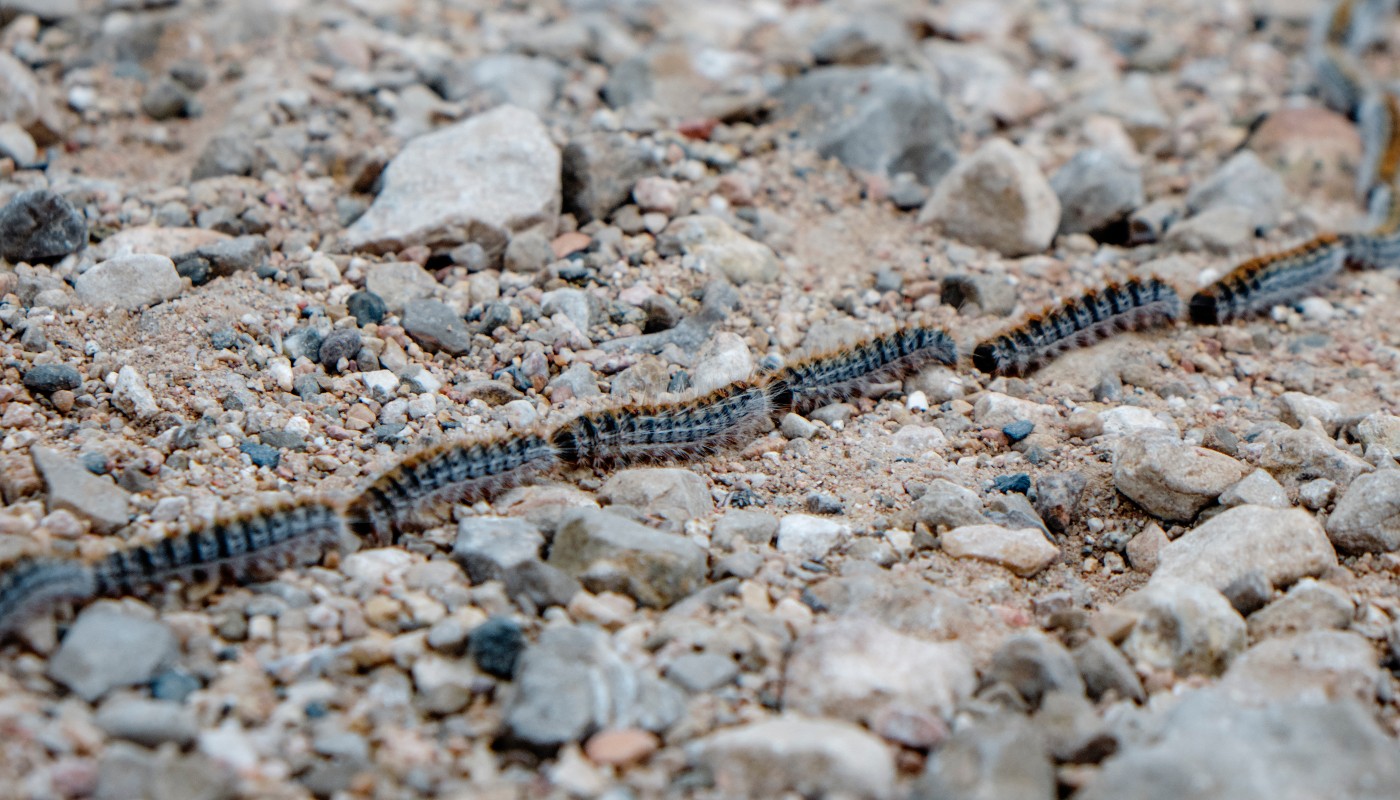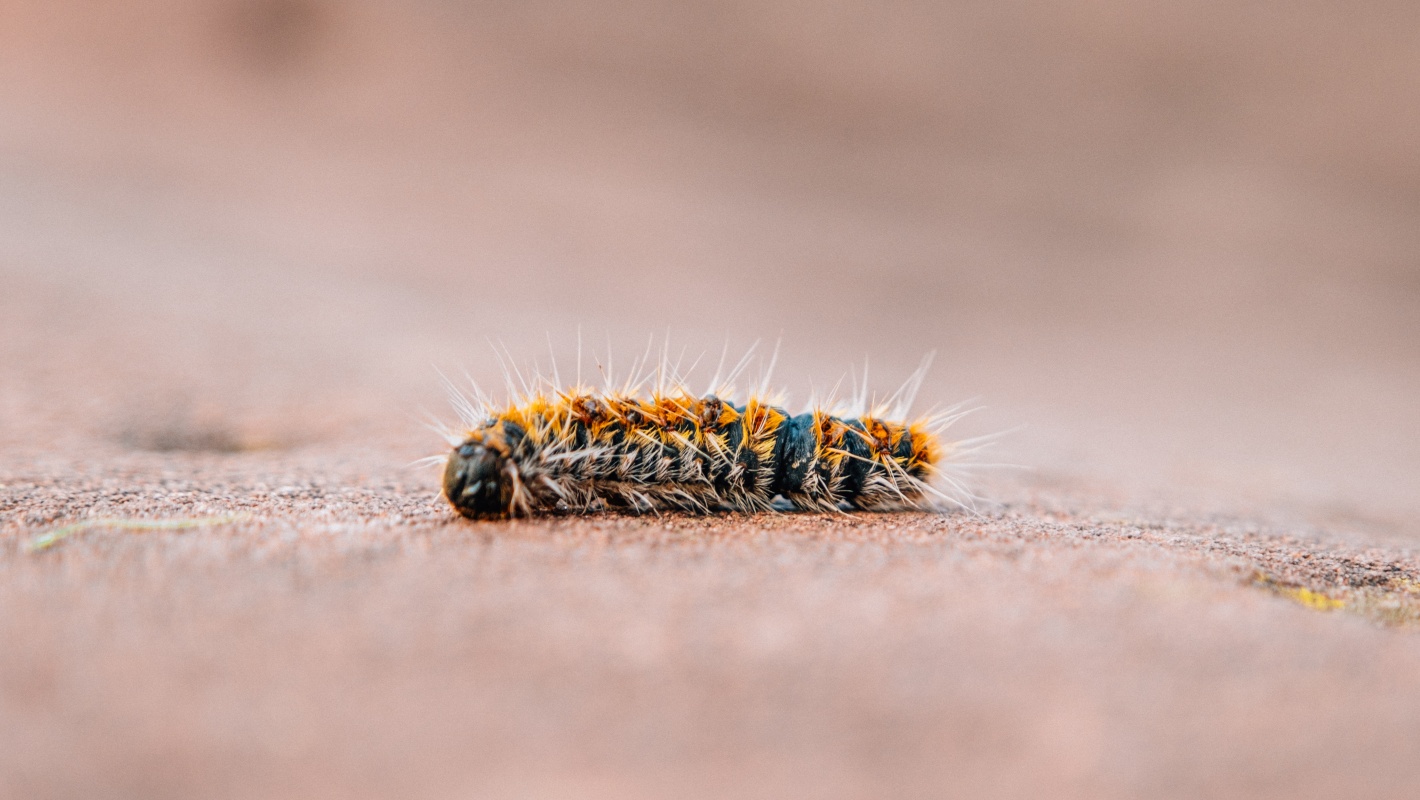Processionary caterpillars and dogs: why are they dangerous for your pet?
Find out about the symptoms that processionary caterpillars cause in dogs, how to prevent contact with them and what to do if your dog is at risk.
pets
Share

They may seem harmless, but nothing could be further from the truth. Today we are talking about the characteristics of processionary caterpillars and their impact on our dogs’ health, since mere contact or ingestion could have lethal effects for our pets. Canines, curious by nature, can be attracted by this larvae that usually show up in the warm weather, particularly in the months of April and May. But what exactly is the processionary caterpillar? Let’s take a look.
What is the processionary caterpillar and why is it poisonous?
Processionary caterpillars are the larvae from a moth that take their name from the way in which they move: in a row, like a procession. They mainly live in pines, fir trees and cedar trees, where they form nests in the shape of white hanging bags, until they fall to the floor to later transform into a chrysalis. During the phase in which they move along the ground, they are around 3 cm in length and covered in extremely toxic urticating hairs, containing a substance called thaumetopoein, which causes powerful inflammatory reactions on contact. This is the main risk, since dogs, attracted by their movement, may smell them, touch them with their tongue or even ingest them, which may cause extremely serious local or systemic reactions.

Symptoms of a processionary caterpillar sting in your dog
When the processionary caterpillar comes into contact with dogs, there are some symptoms that can manifest themselves immediately or within a few hours after the contact, inhalation or ingestion of the caterpillar.
The most common signs are as follows:
- Hypersalivation (excessive drooling).
- Acute inflammation of the tongue, lips or face.
- Intense pain and ulcers in the mouth and tongue.
- Fever and general malaise.
- Conjunctivitis and other eye damage.
- Breathing difficulties (dyspnoea).
- Irritation on the paws or contact areas.
- Nosebleeds.
- Digestive issues, such as abdominal pain, inflammation of the oesophagus or stomach.
- Anaphylactic shock.
One of the most characteristic and serious types of damage caused by contact between processionary caterpillar and dogs is considered to be tongue necrosis, which can lead to the loss of part, or all, of the animal’s tongue. The ingestion of urticating hairs can be deadly, even without actually swallowing the caterpillar in full.
What should I do if my dog is bitten by a processionary caterpillar?
At this point, it's normal to wonder what should I do if my dog is bitten by a processionary caterpillar? Time is fundamental if you have any suspicions, so you should act quickly and see a vet immediately.
The first aid that can be applied before seeing this health professional is as follows:
- Stay calm and act effectively.
- Remove the dog from the affected area to prevent further contact with the caterpillar.
- Wear gloves to protect yourself (you must avoid touching the area with your bare hands).
- Wash the affected area with plenty of cold water, but without rubbing, since this could cause the strands to release more toxins.
- Prevent the dog from licking or scratching the affected area.
Never underestimate what has happened, even if the symptoms seem mild. An allergic reaction or ingestion may deteriorate quickly and requires urgent veterinary attention.

How to avoid processionary caterpillars?
Knowing how to avoid processionary caterpillars is key in order to reduce the chances of your dog coming into contact with one. For example, while out on walks, it’s important to:
- avoid areas with pines, fir trees or cedar trees, particularly between February and May.
- change the usual walking route and choose tarmacked areas or parks without trees that may be home to caterpillars.
- always walk your dog on a lead, particularly if you are in the countryside or in natural parks, since you will be able to control him or her if you detect the presence of these dangerous caterpillars.
In your garden at home, you can check the trees and remove any nests if necessary, and prevent the dog from freely accessing any areas at risk. If your pet is very curious, you can also ask your vet about natural repellents or physical barriers.
The processionary caterpillar represents a real and potentially deadly risk to dogs. Although their appearance and movement is attractive to our pets, contact with them can cause severe or irreversible damage. By being aware of the effects, knowing how to act if these incidents occur and taking precautions at the times of highest risk, you can protect your dog from this dangerous threat.






